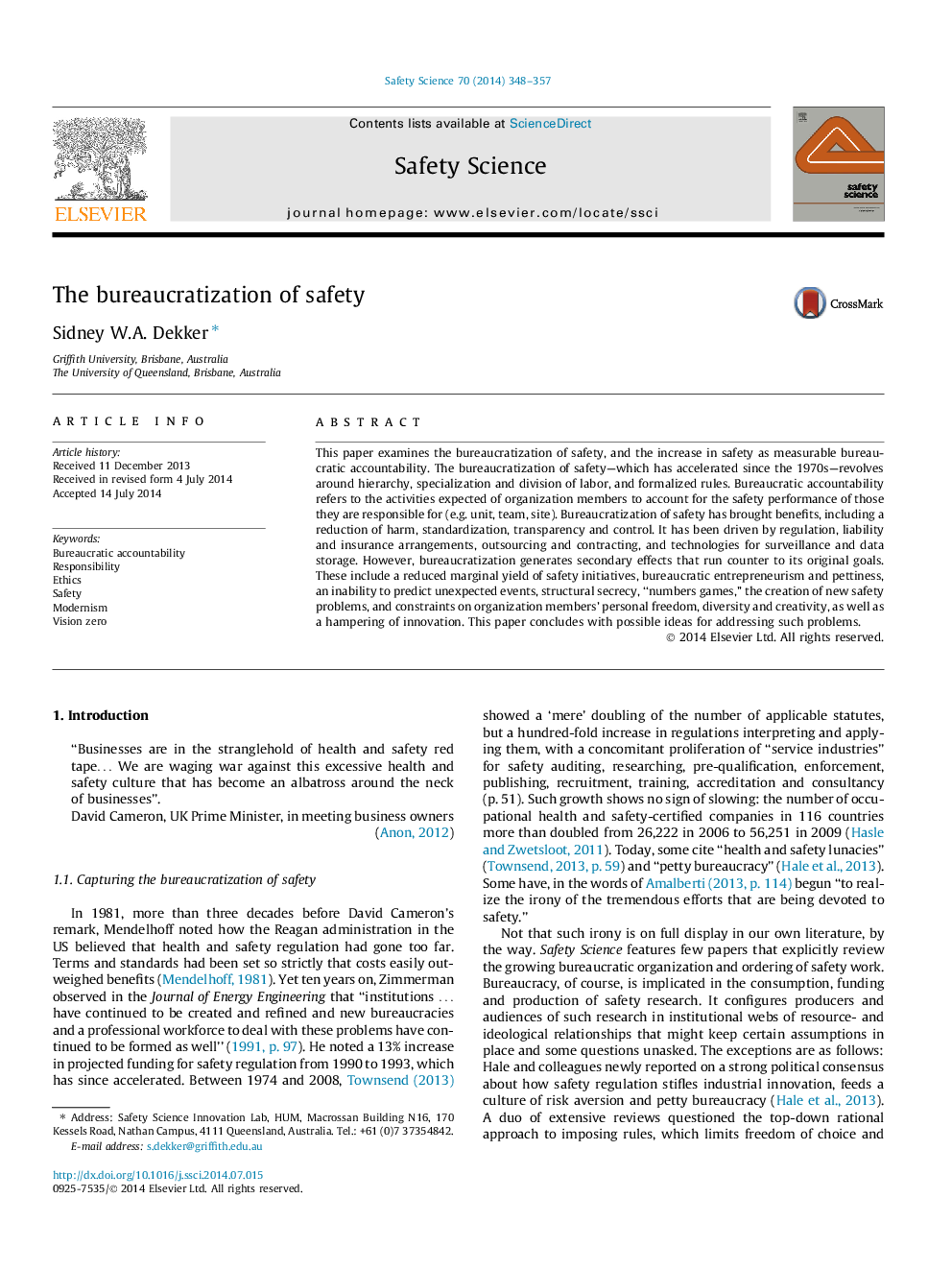| Article ID | Journal | Published Year | Pages | File Type |
|---|---|---|---|---|
| 6976140 | Safety Science | 2014 | 10 Pages |
Abstract
This paper examines the bureaucratization of safety, and the increase in safety as measurable bureaucratic accountability. The bureaucratization of safety-which has accelerated since the 1970s-revolves around hierarchy, specialization and division of labor, and formalized rules. Bureaucratic accountability refers to the activities expected of organization members to account for the safety performance of those they are responsible for (e.g. unit, team, site). Bureaucratization of safety has brought benefits, including a reduction of harm, standardization, transparency and control. It has been driven by regulation, liability and insurance arrangements, outsourcing and contracting, and technologies for surveillance and data storage. However, bureaucratization generates secondary effects that run counter to its original goals. These include a reduced marginal yield of safety initiatives, bureaucratic entrepreneurism and pettiness, an inability to predict unexpected events, structural secrecy, “numbers games,” the creation of new safety problems, and constraints on organization members' personal freedom, diversity and creativity, as well as a hampering of innovation. This paper concludes with possible ideas for addressing such problems.
Related Topics
Physical Sciences and Engineering
Chemical Engineering
Chemical Health and Safety
Authors
Sidney W.A. Dekker,
